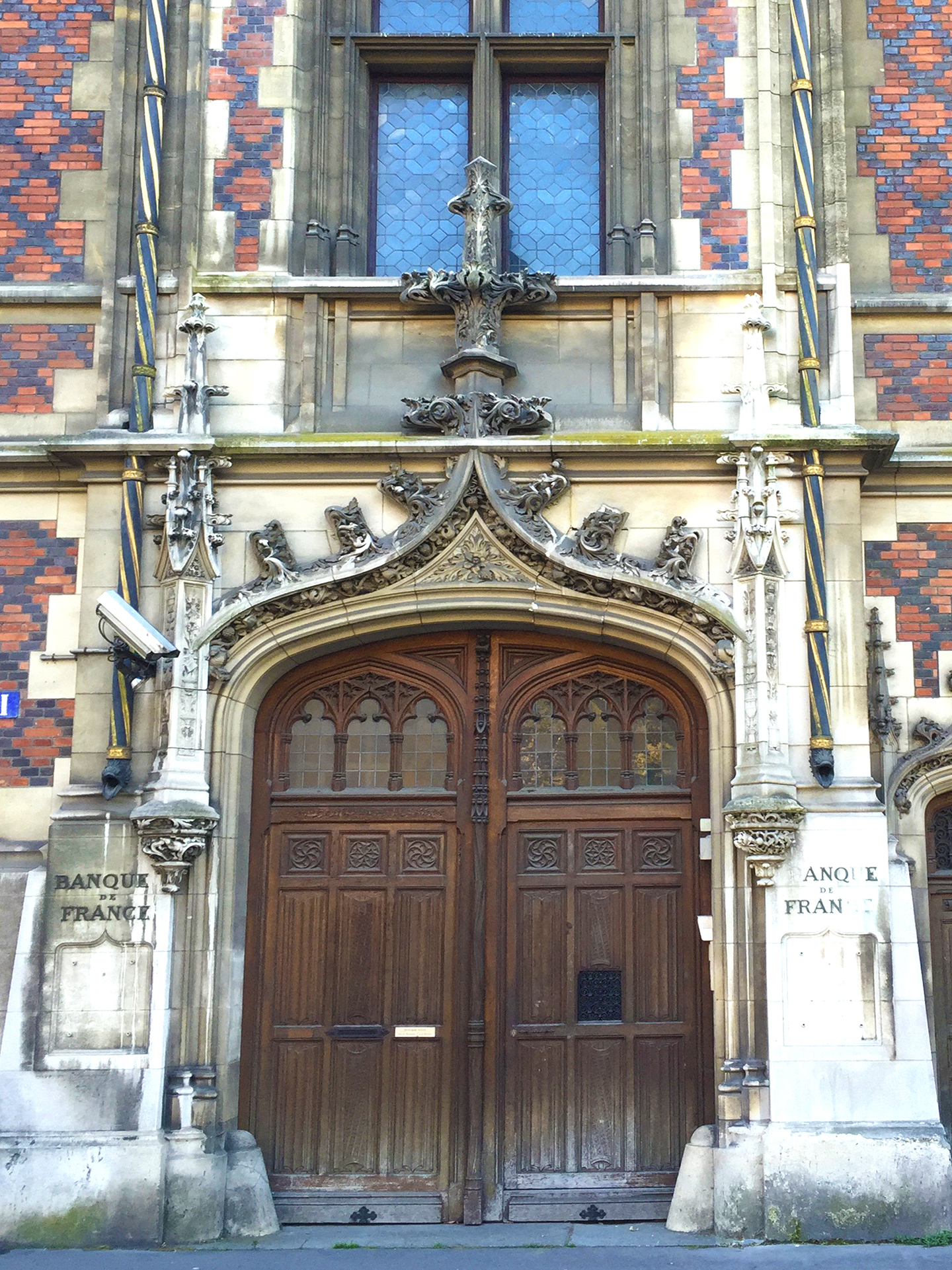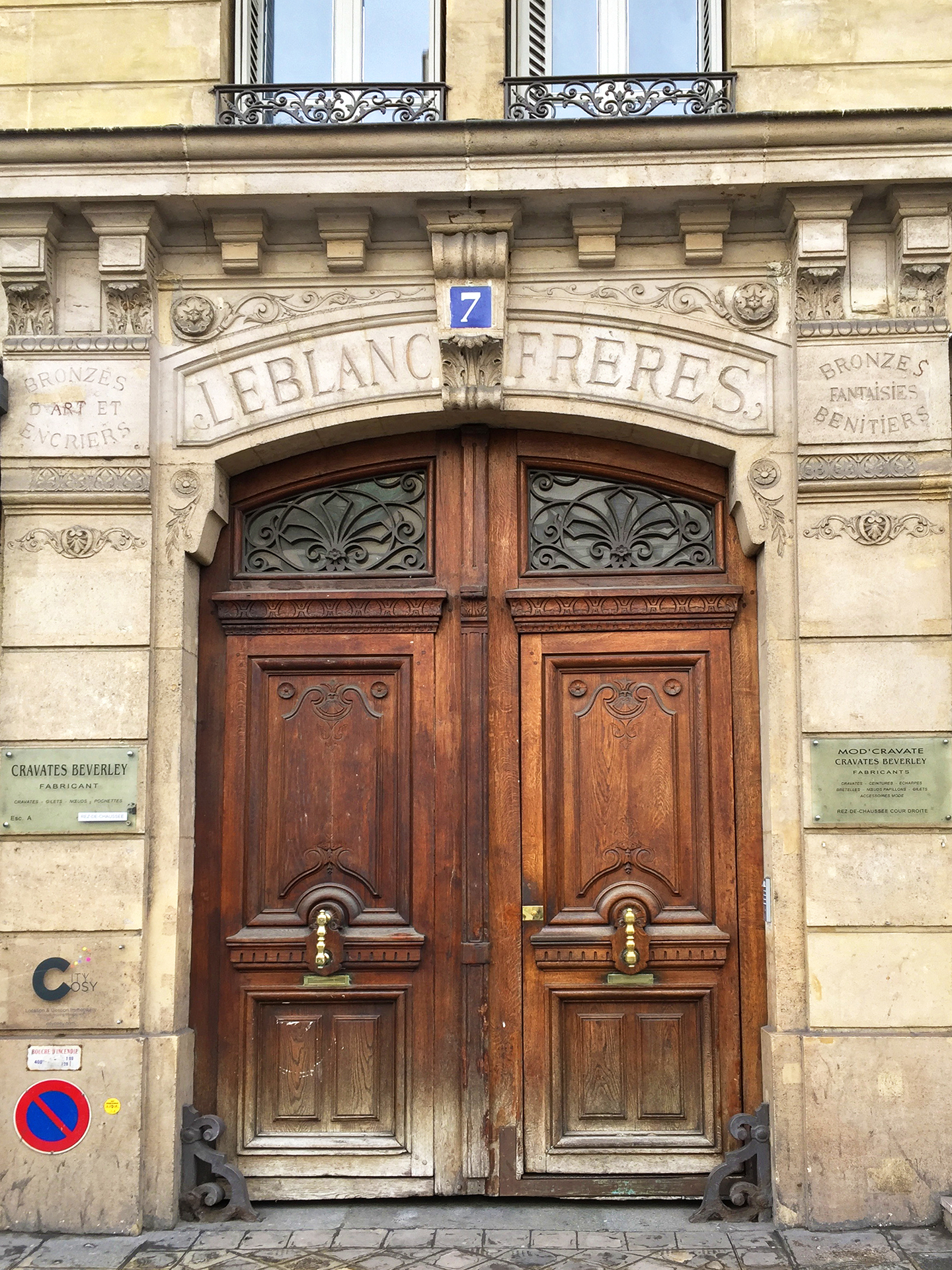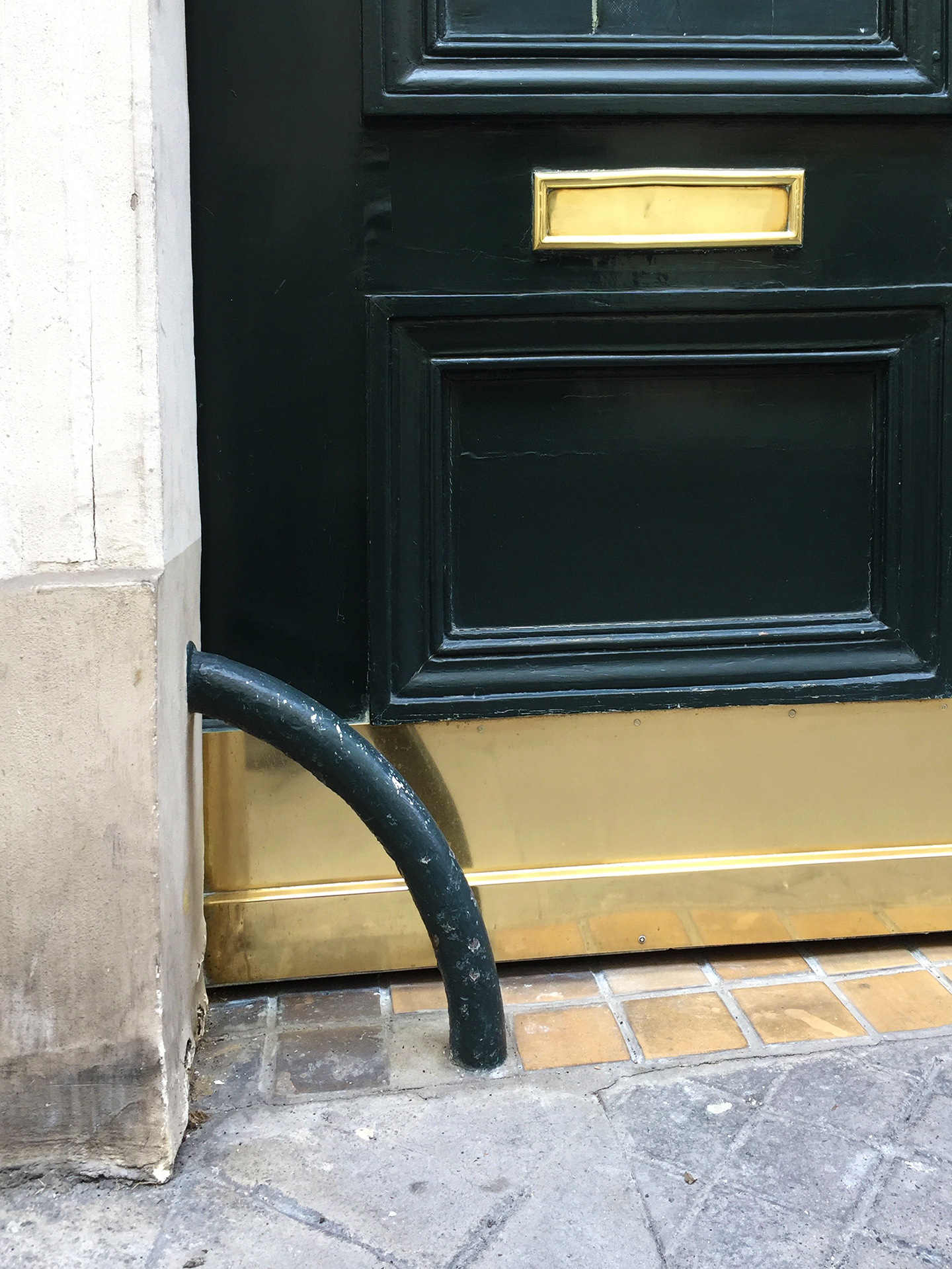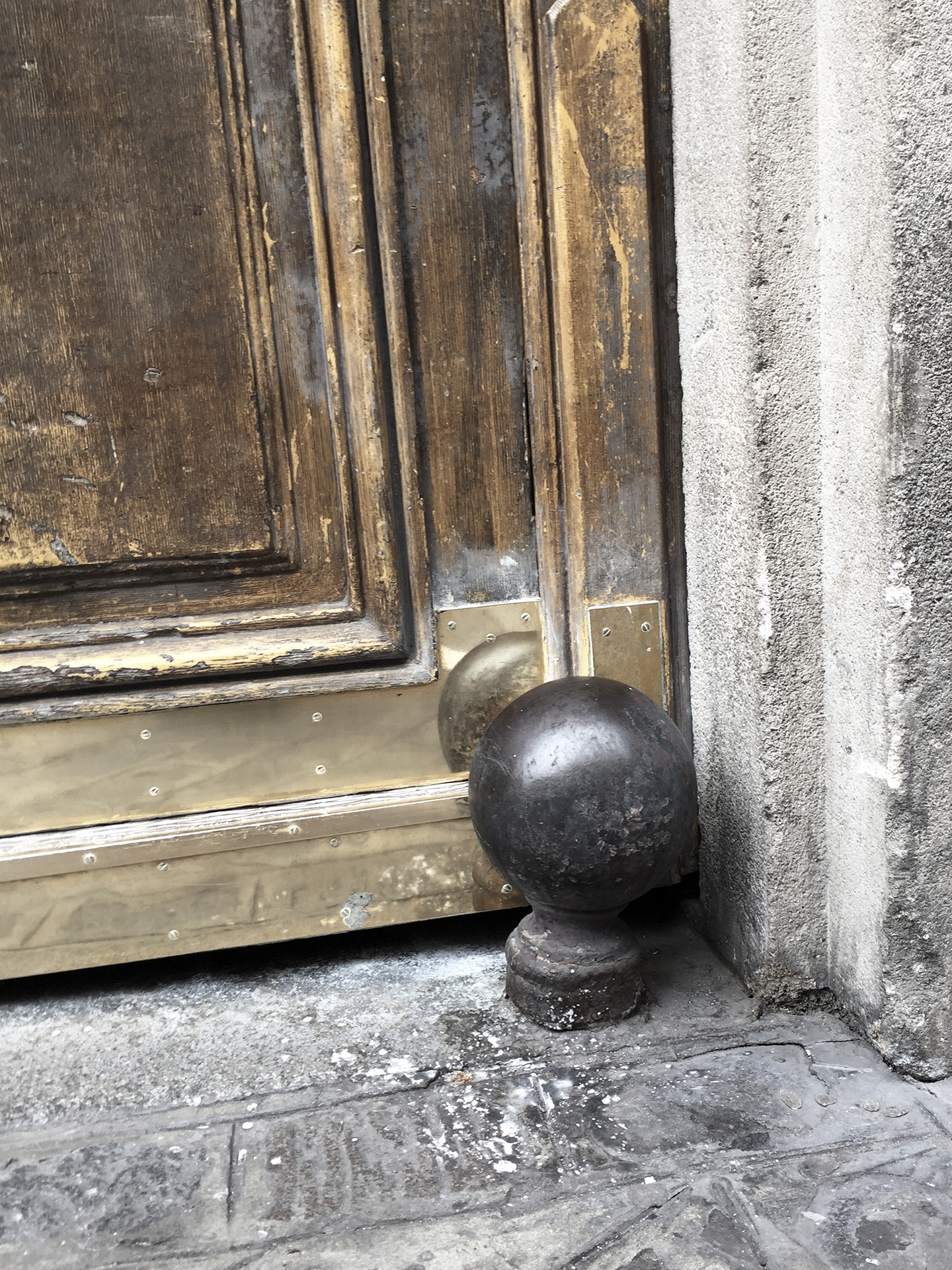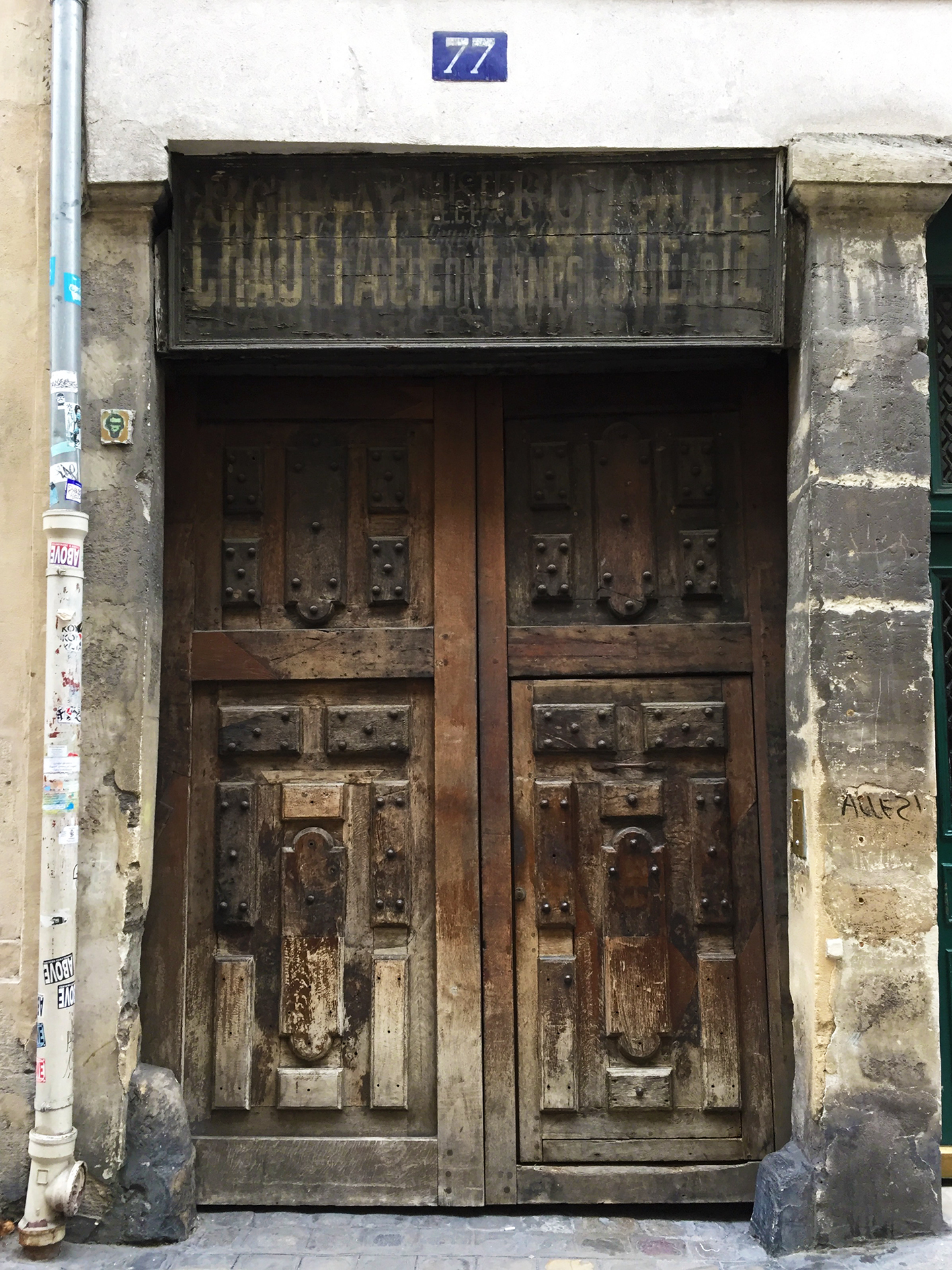I had seen them forever. They were part of the scenery but, quite honestly, I never paid attention to them while I roamed the streets of Paris as a student.
The former Banque de France building on place du Général Catroux
Hôtel particulier d’Almeyras, rue des Francs-Bourgeois
When my sister relocated from the banlieue to southern France seventeen years ago, I had no choice but to look for places to stay in Paris proper: hotels at first, apartments or Airbnb later on if the trip lasted more than four days. In retrospect, it was a blessing in disguise: spending more time in the capital, especially at night, gave me more opportunities to take note of architectural details instead of just rushing to the next appointment.
Rue Réaumur
Courtyard entrance, rue du Faubourg Saint-Honoré
Short chasse-roues, tall caryatids on boulevard Saint-Germain
A bit of good advice when strolling in Paris is to look en haut: roofs, balconies, mascarons, the Eiffel Tower silhouette, a glimpse of Montmartre provide endless excitement. Another good suggestion is to look en bas and not just because Fifi might have left a petit cadeau for you on the trottoir. Throughout the city, I found the old doors enchanting and started to take an inordinate amount of photos to document their variety of style, color, and hardware.
Entrance to Monnaie de Paris, quai de Conti
Courtyard entrance in the 12th arrondissement
Going through my pictures, I noticed that many doors were flanked by low structures made of stone or metal. I had no idea what they were. Research ensued. Pretty soon I was not only photographing doors but also chasse-roues.
Old stone chasse-roue on place des Vosges; the example on the left is reinforced with a wide metal band.
A lonely stone chasse-roue on rue de Turenne
A fancier stone chasse-roue on rue François Miron.
Chasse-roues are not a new invention. They might not be as old as the wheel itself but, apparently, they could be found in antique times as soon as horse-drawn carriages were used. Their primary function was to protect the corner of a wall or a door: wheels and wheel hubs could easily scrape and dig into stone or wood.
A simple metal arc
The “boule” design
Hypotenuse…
Classic design on rue Custine
Another old design on rue de Charonne
Amazing what a good coat of paint will do! Blue on Blue, rue de Cambrai
Looking good on Blvd de Courcelles
You will find chasse-roues in every neighborhood of the city. They come in many shapes and two main materials. Stone was favored in medieval and Renaissance times but many different cast-iron designs were installed during the Haussmannian transformation of Paris.
Lion and Griffin
Rue du Faubourg -Saint-Antoine
Conic
Double snail, boulevard de Courcelles
Minimalist on Ile Saint-Louis
When automobiles replaced fiacres, chasse-roues did not serve a purpose anymore. In fact, they became a bit indésirables but they were unusually difficult to remove: most of them were left in situ. Which suits me just fine. We can all admire vestiges of another time and briefly transport ourselves to the 18th century. Just imagine a capricious horse hauling a gilded carrosse, the right back wheel hitting the guard stone, and someone shouting “sacrebleu” while the occupants readjust their fancy wigs…
Color coordination, rue de Trévise
Rue Tronchet. where Kim Kardashian was robbed. Chasse-roues cannot prevent all damages…
Ancient and worn out, rue Vieille-du-Temple
You may also enjoy reading about door knockers, bistro chairs, and shutters.
Vocabulary
Le chasse-roue: guard stone
La banlieue: the suburbs
En haut: up
Le mascaron: stone figurehead
En bas: down
Le petit cadeau: small gift
Le trottoir: sidewalk
Le chasse-roue: guard stone
Le fiacre: horse-drawn carriage for hire
Indesirable: undesirable, unwelcome
Le carrosse: a fancy horse-drawn carriage, completely enclosed


